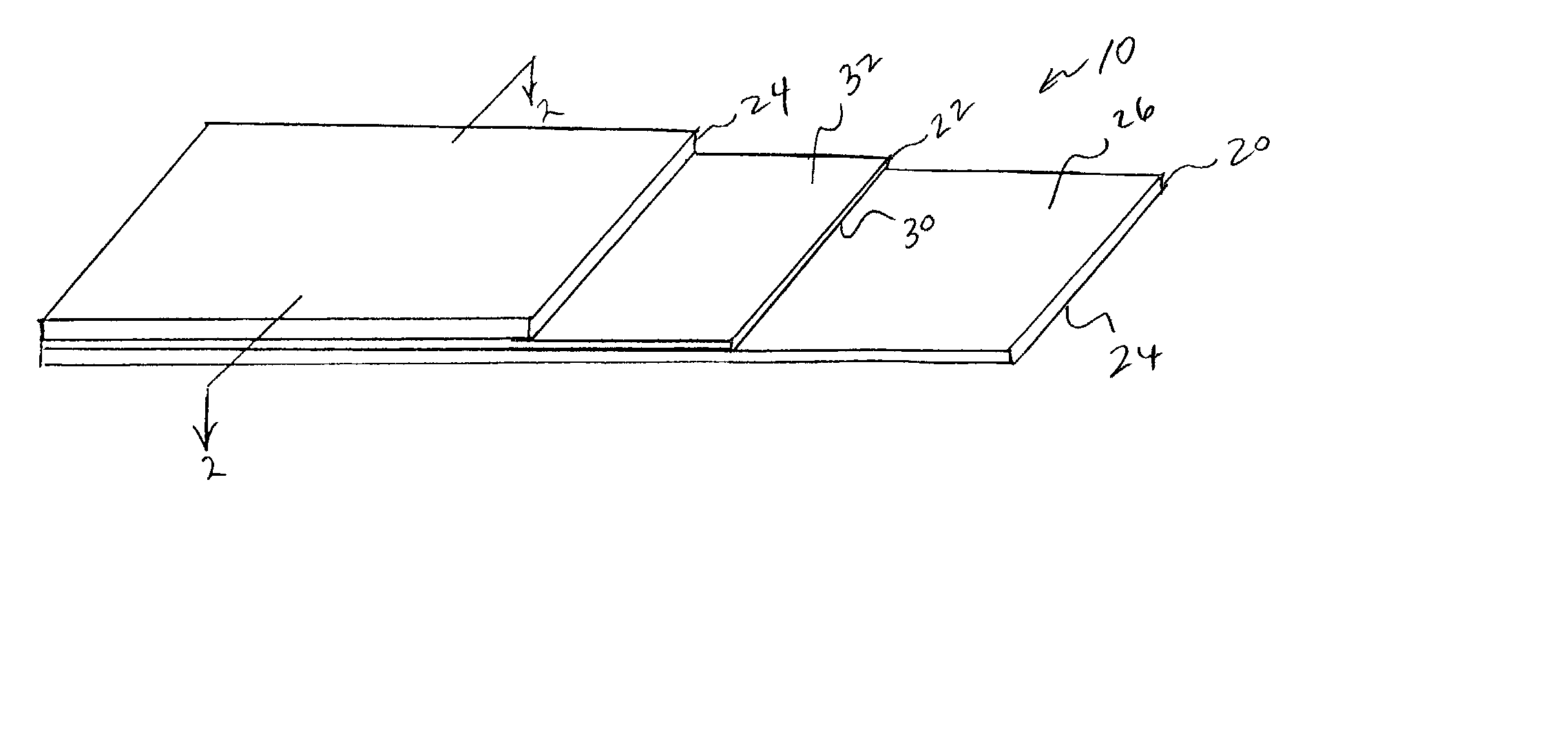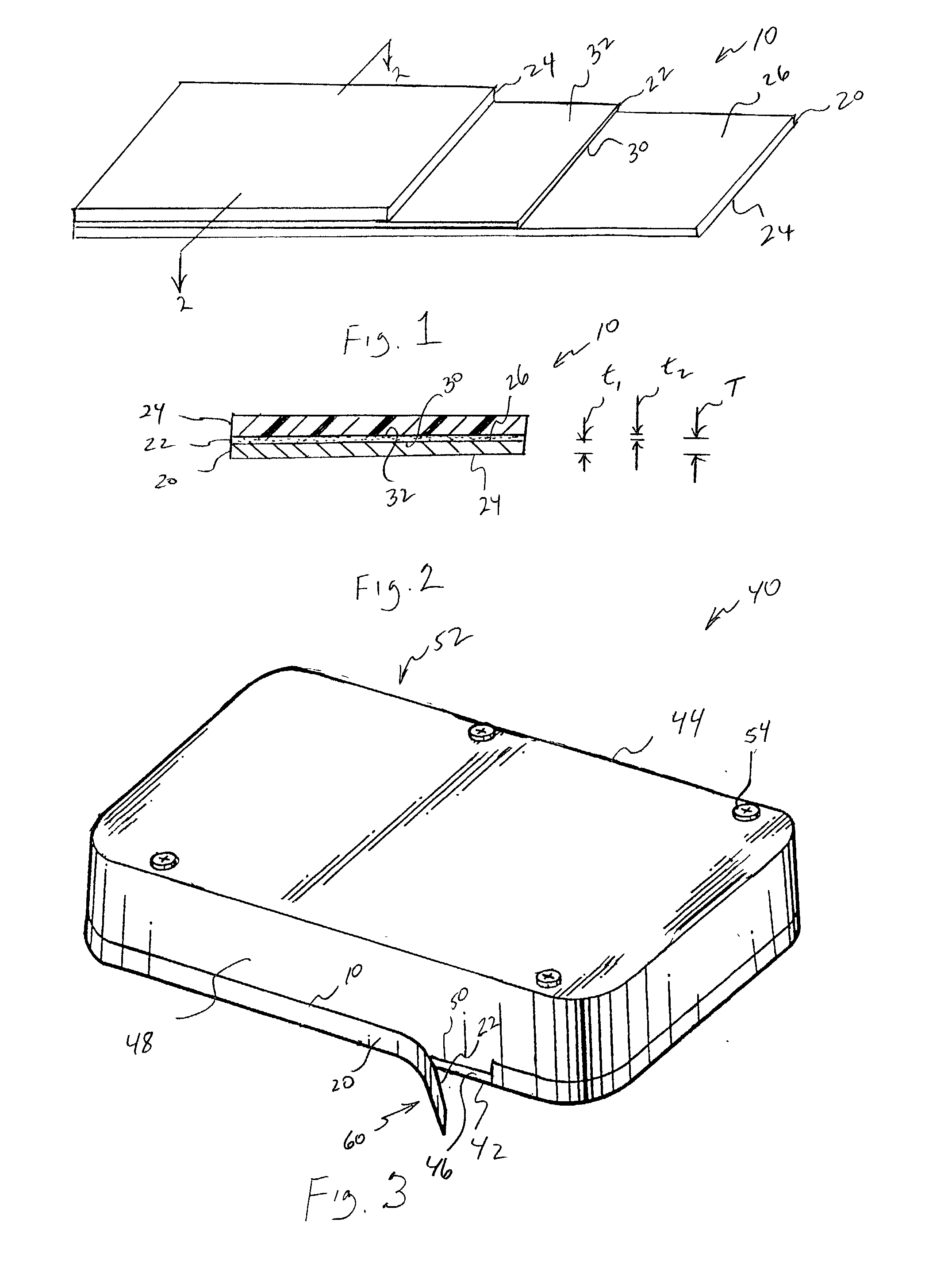Clean release tape for EMI shielding
a technology of emi shielding and tape release, which is applied in the direction of film/foil adhesives, layered products, transportation and packaging, etc., can solve the problems of not being able to remove or reposition other electronic devices, the tapes did not cleanly release from the surfaces of the housing parts, and the use of emi shielding tapes that have been used in sealing
- Summary
- Abstract
- Description
- Claims
- Application Information
AI Technical Summary
Benefits of technology
Problems solved by technology
Method used
Image
Examples
Embodiment Construction
[0041] A layer of a solvent-based, acrylic PSA filled with conductive particles was coated at a thickness of about 2 mils (0.05 mm) onto one side of several strips of 2 mil (0.05 mm) thick aluminum foil. The samples so prepared were adhered using an applied pressure obtained by rolling with a 10 pound (4.5 kg) roller at 12 in / min (30.5 cm / min) once in each lengthwise direction onto stainless steel substrates for 180.degree. peel (PSTC-1) and shear (PSTC-7) adhesion testing. The peel testing was performed at increasing dwell times and at elevated temperatures. The peel adhesion results are shown in Table 1 and the shear adhesion results are shown in Table 2, with the letter "A" in each table denoting an adhesive failure to the substrate, i.e., a "clean break," and the letter "C" denoting a cohesive failure within the adhesive layer, i.e., a non-clean break as would be shown by adhesive residue on the substrate. For purposes of comparison, the results for a comparable conventional, no...
PUM
| Property | Measurement | Unit |
|---|---|---|
| frequency | aaaaa | aaaaa |
| frequency | aaaaa | aaaaa |
| EMI shielding effectiveness | aaaaa | aaaaa |
Abstract
Description
Claims
Application Information
 Login to View More
Login to View More - R&D
- Intellectual Property
- Life Sciences
- Materials
- Tech Scout
- Unparalleled Data Quality
- Higher Quality Content
- 60% Fewer Hallucinations
Browse by: Latest US Patents, China's latest patents, Technical Efficacy Thesaurus, Application Domain, Technology Topic, Popular Technical Reports.
© 2025 PatSnap. All rights reserved.Legal|Privacy policy|Modern Slavery Act Transparency Statement|Sitemap|About US| Contact US: help@patsnap.com


